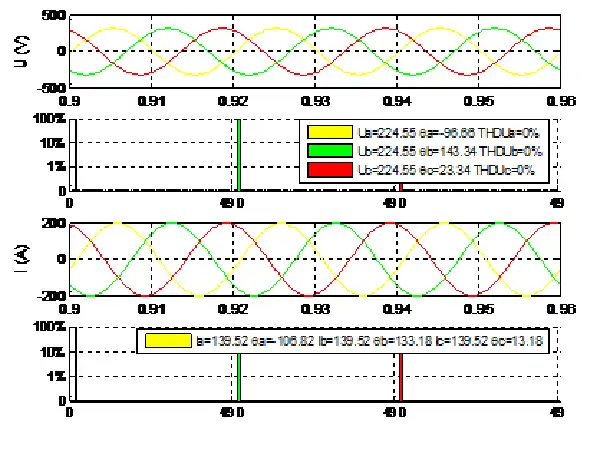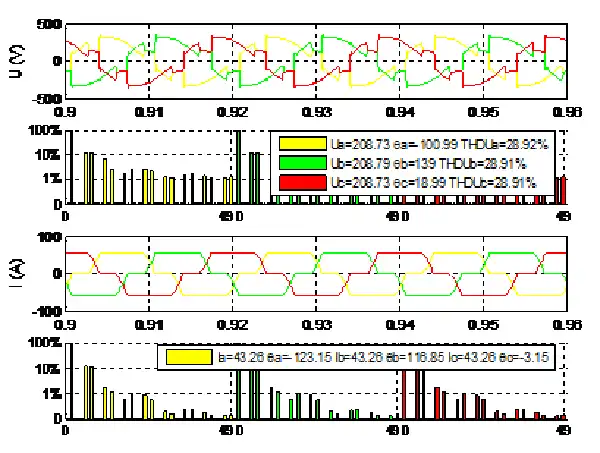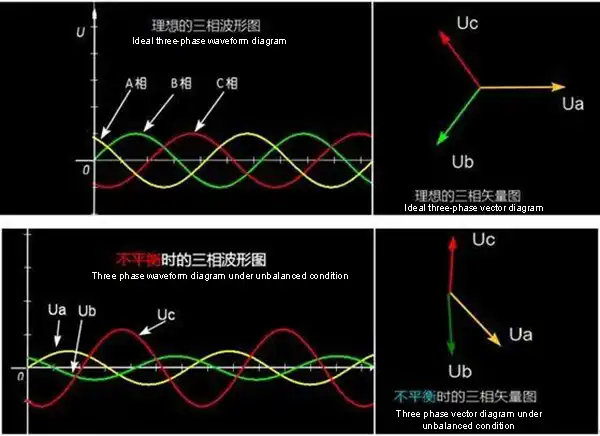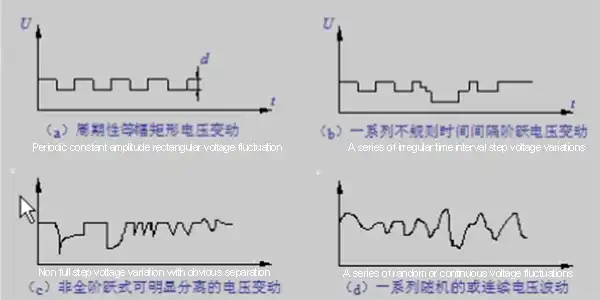The influence of power quality on the motor
The motor directly affects the power grid loss through the power consumption efficiency (the efficiency of converting electrical energy into mechanical energy). With the progress of technology and industrial upgrading, nonlinear and impact loads have been widely used, which greatly reduces the power quality of the distribution network and produces power quality problems such as three-phase imbalance, harmonic, voltage fluctuation, and so on. For the motor, these problems will reduce its energy efficiency and increase the loss of the motor.
Influence of harmonics on motor energy efficiency
In the 50Hz or 60Hz distribution system, the electric energy is not a satisfactory sine wave, and there are often varying degrees of waveform distortion. In general, the operation of electrical equipment may seem normal, but under certain conditions, the influence of harmonics will increase and damage will be caused.

Sine wave voltage and current waveform and spectrum

Distorted voltage and current waveforms and spectra
The higher frequency voltage component caused by harmonics will cause an additional loss in the stator of the AC motor and will increase the operating temperature of the stator and the coils around the stator. The non-sinusoidal voltage will further cause harmonic current to conduct in the winding of the motor.
Positive-sequence harmonics
The magnetic field and current rotation direction generated by the positive sequence harmonics (harmonic numbers 4, 7, 10, 13, etc.) are the same as the fundamental wave.
Negative sequence harmonic
(harmonic numbers 2, 5, 8, 11, 14, etc.) the rotation direction of the magnetic field and current generated is opposite to the fundamental wave.
Zero-sequence harmonics
Zero sequence harmonics (harmonic numbers 3, 6, 9, 15, 21, etc.) do not generate available torque but cause additional losses.
For the motor, harmonics will produce local overheating and vibration, resulting in increased energy consumption, thus reducing the overall energy conversion efficiency of the motor. The harmonic factor (HVF) of the supply voltage of the motor shall not exceed 0.02. In addition, it is also necessary to consider the derating operation caused by the motor temperature rise caused by harmonics.
Influence of three-phase unbalance on motor energy efficiency
Three-phase unbalance is usually defined by the ratio of negative sequence and zero sequence components. In a symmetrical three-phase system, three symmetrical components of zero sequence, positive sequence, and negative sequence can be decomposed by the symmetrical component method. Since the motor generally has no neutral line, there is no zero sequence current, zero sequence voltage, and zero sequences magnetic field in the motor.

When the three-phase voltage is unbalanced, the positive sequence voltage forms a positive sequence current in the stator and rotor, and the generated electromagnetic torque is positive, which is the driving torque. The negative sequence voltage forms a negative sequence current in the stator and rotor, and the generated electromagnetic torque is negative, which plays a braking role and reduces the total electromagnetic torque. This may cause additional temperature rise and efficiency loss, resulting in reduced starting performance and overload capacity.
Influence of voltage fluctuation and flicker on motor energy efficiency
Voltage fluctuation refers to the rapid voltage fluctuation that deviates from the rated value. Flicker refers to the visual reaction of human eyes caused by the flicker of light caused by voltage fluctuation, which also belongs to a voltage fluctuation phenomenon. Therefore, voltage fluctuation and flicker are the same kinds of problems.

voltage fluctuation
The energy efficiency of the motor will be affected by the fluctuation amplitude and frequency, which will cause additional loss. If affected by the interaction of the two, the additional loss will further increase, resulting in a decrease in efficiency.
Summary
In general, among the above three power quality problems, the three-phase imbalance has the greatest impact on the energy efficiency of the motor, followed by harmonics, and the voltage fluctuation and flicker have the smallest impact. However, both will increase the power loss and affect the economic operation of the motor.
Therefore, it is necessary to strengthen the technical management of motor power supply quality and regularly carry out the steady-state power quality test of the motor power supply line. When the power quality indexes such as harmonic and three-phase imbalance exceed the standard or are at a high level, it is necessary to find out the reasons, take countermeasures and improvement measures in time, and limit them to the range that can ensure the efficient and economic operation of the motor.



